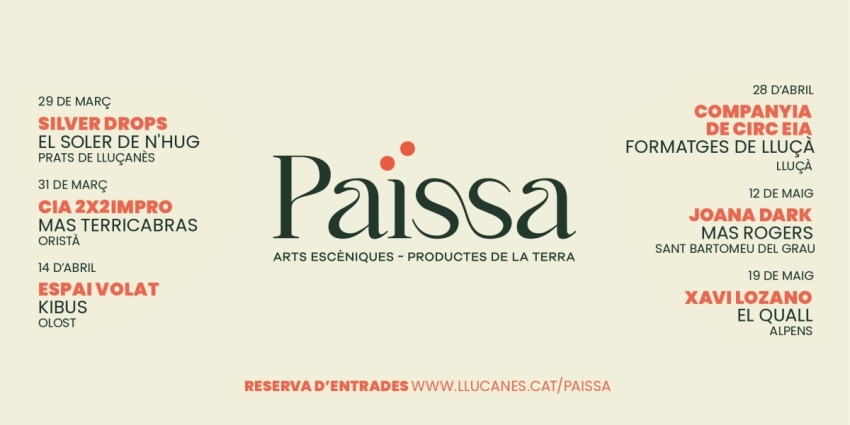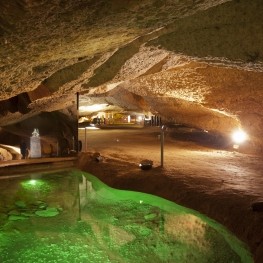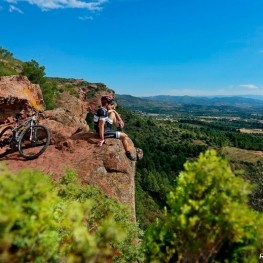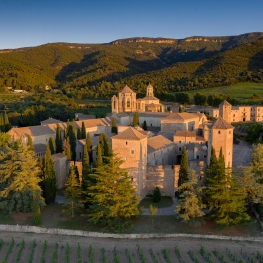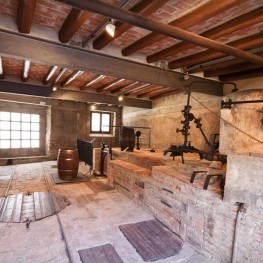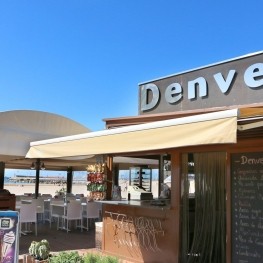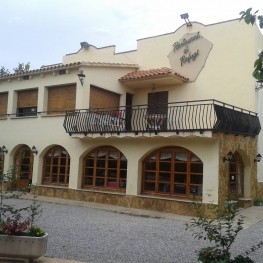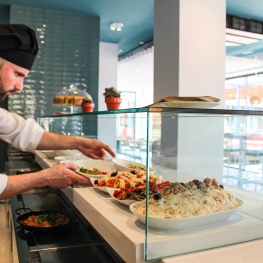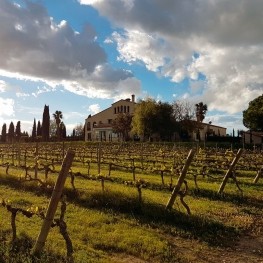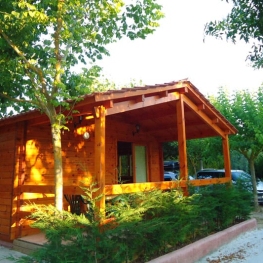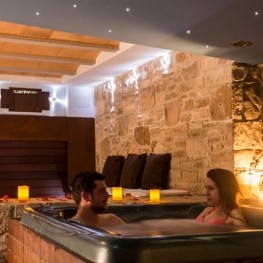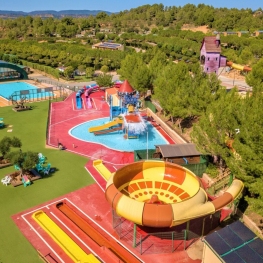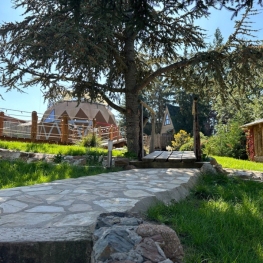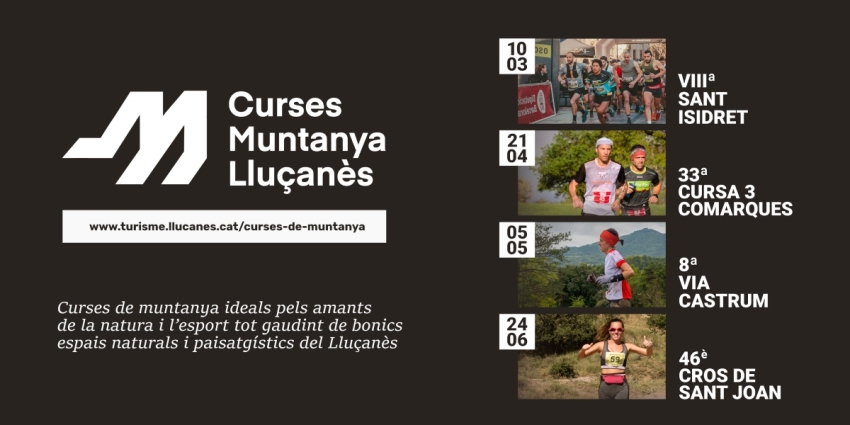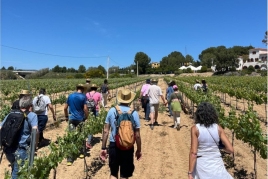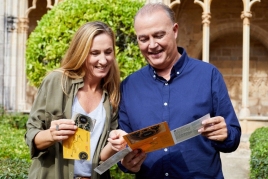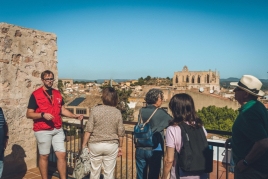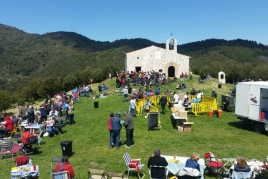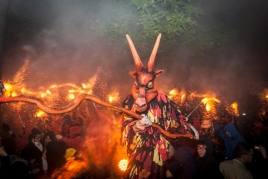Prades route
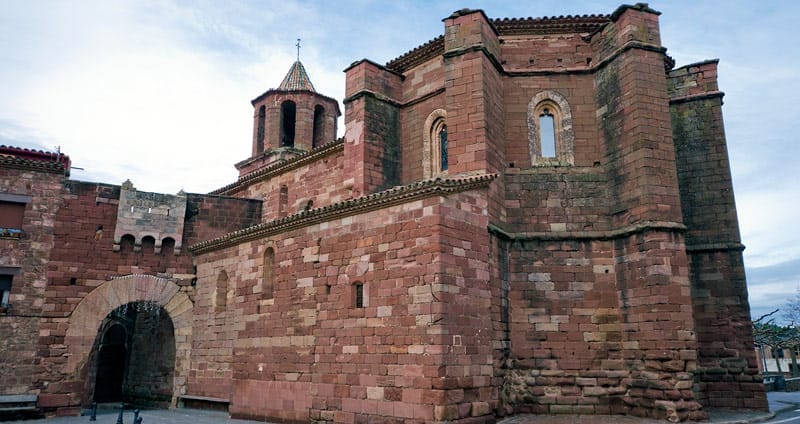
A flat city between mountains which gives its name. Flat and red, the color of the stones of its main buildings and many homes. Its location makes it an ideal base for excursions. But it also pays to know the heart of this medieval town layout, with remains of walls and castle. It Prades, in the Baix Camp.
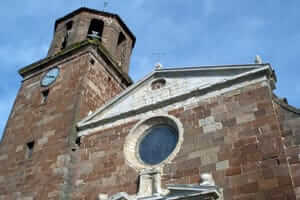 Located 950 meters above sea level, if you go in winter maybe you can even stomp snow, and if you go in summer sure you will be shaded chilly. What certainly will not save, nor in summer or winter, are the curves to reach either through the T-700, T-701 or T-704. It is a small price to pay Prades to be in this place we could define as idyllic, surrounded by mountains. The villa is certainly a unique place, charming, and not in vain its historical sites since 1993 has been declared of cultural interest. So take a while to know its streets, enjoy the tranquility of between walls and reddish many of the buildings, and if it is market day Seize to mingle with people and I think, even for a moment, in this same place the stops are mounted at least since 1200!
Located 950 meters above sea level, if you go in winter maybe you can even stomp snow, and if you go in summer sure you will be shaded chilly. What certainly will not save, nor in summer or winter, are the curves to reach either through the T-700, T-701 or T-704. It is a small price to pay Prades to be in this place we could define as idyllic, surrounded by mountains. The villa is certainly a unique place, charming, and not in vain its historical sites since 1993 has been declared of cultural interest. So take a while to know its streets, enjoy the tranquility of between walls and reddish many of the buildings, and if it is market day Seize to mingle with people and I think, even for a moment, in this same place the stops are mounted at least since 1200!
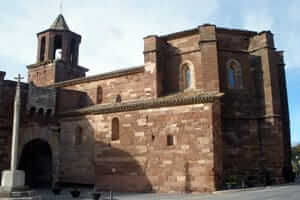 And it Prades continues to be in a crossroads, and hence the birth and growth and the importance of the market almost from the moment it was recaptured by the Saracens by the Count of Barcelona Ramon Berenguer IV, in the middle the twelfth century. We propose an itinerary to discover the most interesting, and the start of term on the cross is in the back of the church, opposite one of the portals that allowed access into the town. The cross welcomes visitors from the thirteenth century, and by this point the red color that we talked about, especially in the walls of the church is well represented, and that is due to the hue of the sharp stone It surrounds much of the population-and, of course, was the one that was used to lift buildings. If we look to the left we will see a stretch of wall still standing. Then we will see.
And it Prades continues to be in a crossroads, and hence the birth and growth and the importance of the market almost from the moment it was recaptured by the Saracens by the Count of Barcelona Ramon Berenguer IV, in the middle the twelfth century. We propose an itinerary to discover the most interesting, and the start of term on the cross is in the back of the church, opposite one of the portals that allowed access into the town. The cross welcomes visitors from the thirteenth century, and by this point the red color that we talked about, especially in the walls of the church is well represented, and that is due to the hue of the sharp stone It surrounds much of the population-and, of course, was the one that was used to lift buildings. If we look to the left we will see a stretch of wall still standing. Then we will see.
A Renaissance fountain
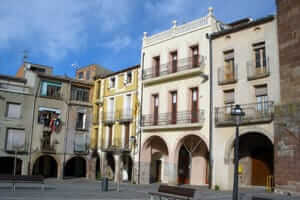 Through the portal we find ourselves in one of the most important and emblematic of Prades, if not the most. The Plaza Mayor is a great beauty, with buildings of different colors and eras but in harmony, and the porches common denominator. We have already pointed out that this is where the market is held on Saturdays, and besides being the mall so it is political, and we also find the Casa de la Villa, and religious, with the facade of the church of Santa Maria presiding over the space. Despite suffering damage during the Civil War, the temple is quite attractive, not only because of the reddish color, but also because the facade has Renaissance elements, not very common in our country, but the whole must be considered of transition between Romanesque and Gothic.
Through the portal we find ourselves in one of the most important and emblematic of Prades, if not the most. The Plaza Mayor is a great beauty, with buildings of different colors and eras but in harmony, and the porches common denominator. We have already pointed out that this is where the market is held on Saturdays, and besides being the mall so it is political, and we also find the Casa de la Villa, and religious, with the facade of the church of Santa Maria presiding over the space. Despite suffering damage during the Civil War, the temple is quite attractive, not only because of the reddish color, but also because the facade has Renaissance elements, not very common in our country, but the whole must be considered of transition between Romanesque and Gothic.
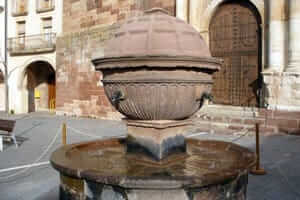 Now we can focus on one element of this square that is what we more place to meet, even for their peculiarity, and this is none other than the source. A source of Renaissance and shaped like a globe, with four lanes, one for each cardinal point. It is a symbol of the city, and say that one night a year, in July, instead of flowing water well in her digs!
Now we can focus on one element of this square that is what we more place to meet, even for their peculiarity, and this is none other than the source. A source of Renaissance and shaped like a globe, with four lanes, one for each cardinal point. It is a symbol of the city, and say that one night a year, in July, instead of flowing water well in her digs!
The Castle of the Counts of Prades (or what's left of it)
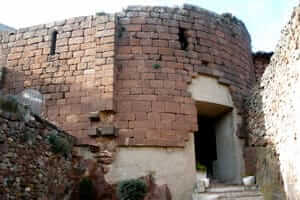 Of the various streets leading to the square, take the Calle Mayor, with some bars, restaurants and shops, and immediately find the Plaza de la Pau, also known as indicates a panel, like square egg or garlic. It is one of the few places that is in the old town of Prades, apart from the Mayor, and here we can see that many houses, even not very old building, are made with red stone. Returning to the street, a little further, on the left, out of a street where there is a portal that of Ponos, very different than, for example, have found the beginning of the route, in the middle, next to the boundary cross. In this case it is a small Gothic portal and was built to open a new step in the wall, when it practically no longer had a defensive use.
Of the various streets leading to the square, take the Calle Mayor, with some bars, restaurants and shops, and immediately find the Plaza de la Pau, also known as indicates a panel, like square egg or garlic. It is one of the few places that is in the old town of Prades, apart from the Mayor, and here we can see that many houses, even not very old building, are made with red stone. Returning to the street, a little further, on the left, out of a street where there is a portal that of Ponos, very different than, for example, have found the beginning of the route, in the middle, next to the boundary cross. In this case it is a small Gothic portal and was built to open a new step in the wall, when it practically no longer had a defensive use.
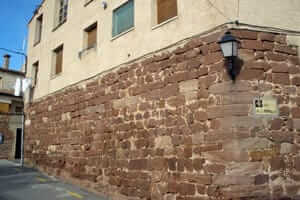 Also the houses are "advantage" of this "final stage" of the wall, as we saw when the end of the main street: the walls of some houses lean on the wall or directly east part of the building. You can see some houses and at least curious, with one hand with the red color of the stone brand Prades, and a more recent part and height with very different materials.
Also the houses are "advantage" of this "final stage" of the wall, as we saw when the end of the main street: the walls of some houses lean on the wall or directly east part of the building. You can see some houses and at least curious, with one hand with the red color of the stone brand Prades, and a more recent part and height with very different materials.
Let's find street Costa del Castillo, with slight slope and very old houses and half have the castle was the seat of the counts of Prades with the castral church of San Miguel. Unfortunately, one and another there remains strong thing, and even has relatively little information about its history and how it must have been originally. It is thought to have been built around the twelfth century and the mid-sixteenth already in pretty bad shape. Conflicts like war Reapers, and later did the neighbors yards and homes, had just sentenced this heritage. The church came somewhat less battered and retains a round apse in ruins, a section of the ship and an old side chapel.
The Planet of the Pont
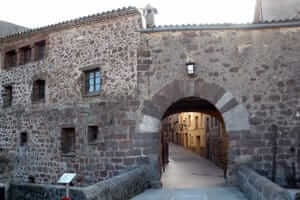 Upon completion of travel on the road from the Costa del Castillo, we can turn right for the passage of the Castle and reach the small and collection Square de los Infantes, where is the what was once the house of the Villa and today hosts various services such as the library, a nursing home, an office and a telecentre. Through New Bridge Street we go right to call Planet del Pont, one of the outputs (or inputs) of the population in the north. It is believed that the walls (built between the XIV and XV) initially consisted of four gates and what we now have in front of and named after bridge spanning the ravine of the Source of Grau. The portal house Cal crosses Pinyons, a home that is a true open-air museum of old tools of work in the field, hanging from the walls. Beside it is the oldest house preserved in Prades, the thirteenth century.
Upon completion of travel on the road from the Costa del Castillo, we can turn right for the passage of the Castle and reach the small and collection Square de los Infantes, where is the what was once the house of the Villa and today hosts various services such as the library, a nursing home, an office and a telecentre. Through New Bridge Street we go right to call Planet del Pont, one of the outputs (or inputs) of the population in the north. It is believed that the walls (built between the XIV and XV) initially consisted of four gates and what we now have in front of and named after bridge spanning the ravine of the Source of Grau. The portal house Cal crosses Pinyons, a home that is a true open-air museum of old tools of work in the field, hanging from the walls. Beside it is the oldest house preserved in Prades, the thirteenth century.
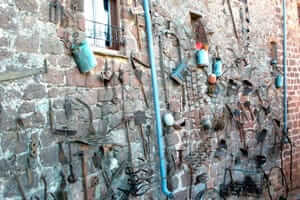 Beyond the portal it gives us the sense (real) that the old town is over and that the fields and crops take over the territory. So, after watching fragments of wall that in this part have survived to this day, we crossed reverse the Planet of Pont and lined the streets of San Antonio, which ends in the main square and therefore to play from where we had started walking.
Beyond the portal it gives us the sense (real) that the old town is over and that the fields and crops take over the territory. So, after watching fragments of wall that in this part have survived to this day, we crossed reverse the Planet of Pont and lined the streets of San Antonio, which ends in the main square and therefore to play from where we had started walking.
The patron saint of beekeepers
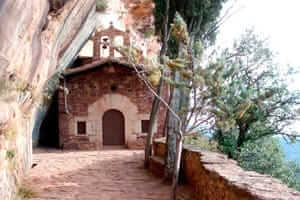 If you have a little time, we suggest a visit worthwhile, within the same term of Prades and about two kilometers from the historic center we just saw. We refer to the shrine of Our Lady of the Abellera, in which we take the T-704 road towards La Febró or Alcover, and, on the left, a sign tells us the way to access there. Also you can walk from Prades, in this case through the Old Way of the Abellera, and this journey will serve to also meet the chapels of San Antonio and San Roque. As for the Abellera, it is a construction of 1570 literally embedded in the cliff taking advantage of a natural cave. It is therefore interesting part made by human hands, the chapel, as nature has given the cave and red earth of the place. And certainly also the panoramic view over the valley of the river and the plain Brugent Alt Camp.
If you have a little time, we suggest a visit worthwhile, within the same term of Prades and about two kilometers from the historic center we just saw. We refer to the shrine of Our Lady of the Abellera, in which we take the T-704 road towards La Febró or Alcover, and, on the left, a sign tells us the way to access there. Also you can walk from Prades, in this case through the Old Way of the Abellera, and this journey will serve to also meet the chapels of San Antonio and San Roque. As for the Abellera, it is a construction of 1570 literally embedded in the cliff taking advantage of a natural cave. It is therefore interesting part made by human hands, the chapel, as nature has given the cave and red earth of the place. And certainly also the panoramic view over the valley of the river and the plain Brugent Alt Camp.
Inside the chapel, the size of the Virgin-a 1940 copy of the image and likeness of his antecessora- named after Abellera and is considered the patroness of Catalan beekeepers. His crown, not always wears, is a beautiful piece with silver bees fifty with his queen and with the coat of Prades.
A good place, then, where you can end this route and get to know, even a little, not only Prades medieval but also the surrounding mountains, the mountains of Prades. However, if even you have a little time We can do a few more breaks.
The Monastery of Poblet and Espluga de Francoli
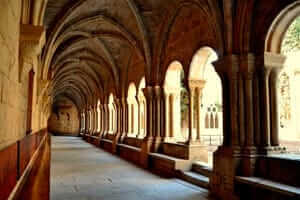 If still you have the energy and time, we suggest you visit the Monastery of Poblet, to the Cistercian Route, located just 30 minutes from Prades. This was raised at the foot of the mountains of Prades in the early twelfth century until the today remains alive despite the passing of time. Thanks to his majesty, thanks to the persistence of his monks of the Cistercian order that inhabit it since its founding and because of the role he developed as religious headquarters of the Catalonia and Aragon has been recognized on numerous occasions.
If still you have the energy and time, we suggest you visit the Monastery of Poblet, to the Cistercian Route, located just 30 minutes from Prades. This was raised at the foot of the mountains of Prades in the early twelfth century until the today remains alive despite the passing of time. Thanks to his majesty, thanks to the persistence of his monks of the Cistercian order that inhabit it since its founding and because of the role he developed as religious headquarters of the Catalonia and Aragon has been recognized on numerous occasions.
Another excursion we can do, also just 30 minutes, is to visit the Espluga of Francolí, to discover its charms, as the winery Modernist (The Cathedral of Wine), the Museum of Rural Life or, for the more adventurous, Las Cuevas Espluga.
You may also be interested in: Guided tours of the towns and cities of Catalonia | Know the religious heritage
What to do
Coves de l'Espluga de Francolí
L'Espluga de FrancolíThe Espluga de Francolí Caves are an open door to the geological…
Reial Monestir de Santa Maria de Poblet
Vimbodí i Poblet (a 2.5 Km)A magnificent architectural complex located among the most prominent monasteries in Europe.…
Museu Fassina Balanyà
L'Espluga de FrancolíLa Fassina Balanyà was a small family industry that has its origins…
Where to eat
Restaurant Denver Cambrils
Cambrils (a 27.8 Km)The history of the Denver begins many years ago, as many as…
Arena Tapas Restaurant
Salou (a 28.8 Km)Enjoy an innovative cuisine, with high-quality local products of proximity, with an…
L'Orangerie de Clos Barenys
Vila-seca (a 26.5 Km)Under our fires we elaborate Mediterranean high gastronomy selecting the best products.…
Where to sleep
El Molí Oleari
Montblanc (a 5.3 Km)Molí Olear is a space of calm and sensations, designed to offer…
Camping Montblanc Park Capfun
Tarragona (a 7.2 Km)In the interior of the Costa Daurada, the Montblanc Park campsite offers…
Hotel rural - Xalet de Prades
PradesImmerse yourself in the nature of the Sierra de Montsant Natural Park…

